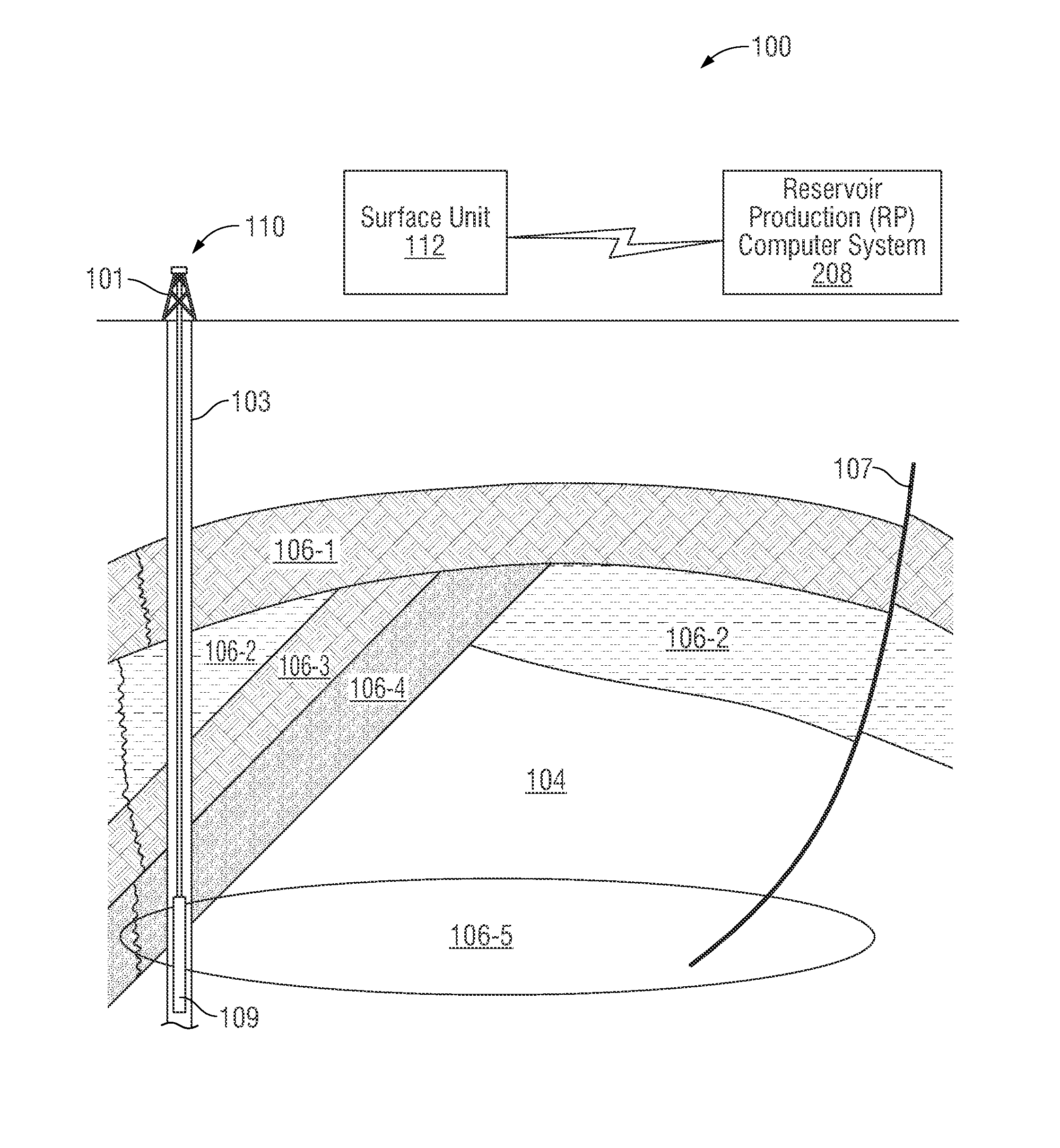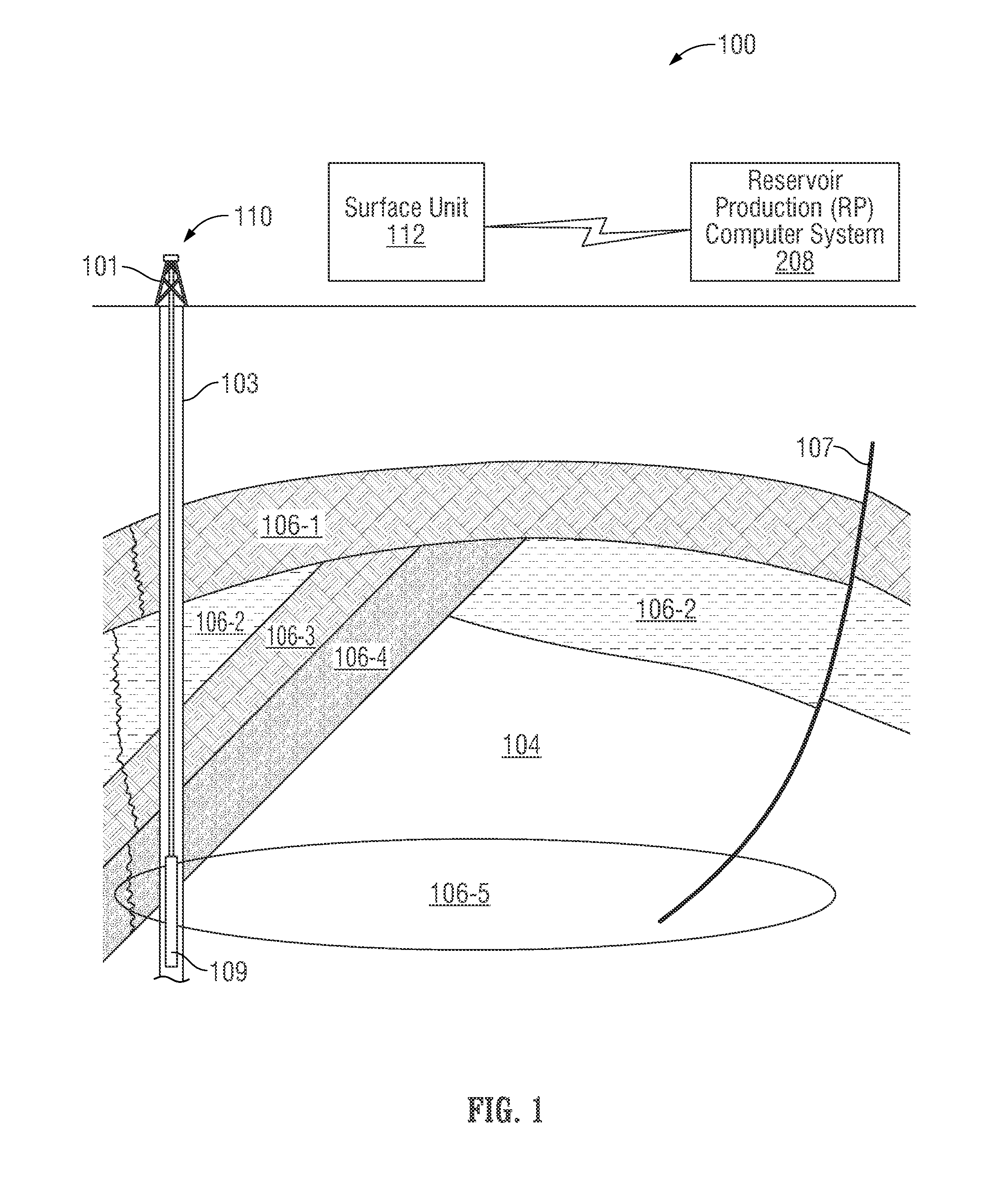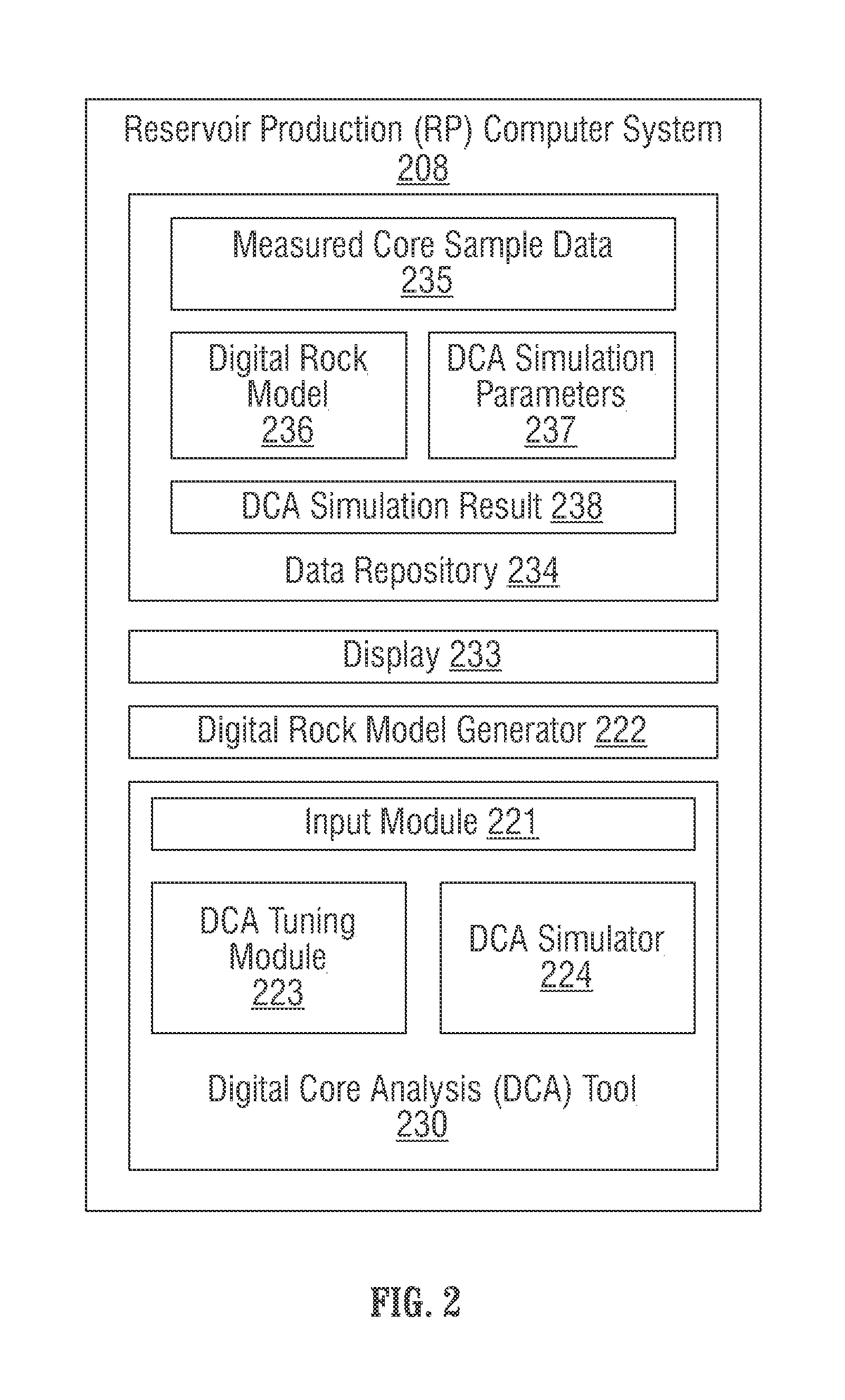Tuning digital core analysis to laboratory results
a technology of digital core analysis and laboratory results, applied in the direction of instruments, geomodelling, borehole/well accessories, etc., can solve the problem that the residence time of fluids within the model is too short for many processes to fully develop, and achieve the effect of reducing the differen
- Summary
- Abstract
- Description
- Claims
- Application Information
AI Technical Summary
Benefits of technology
Problems solved by technology
Method used
Image
Examples
Embodiment Construction
[0019]Aspects of the present disclosure are shown in the above-identified drawings and described below. In the description, like or identical reference numerals are used to identify common or similar elements. The drawings are not necessarily to scale and certain features may be shown exaggerated in scale or in schematic in the interest of clarity and conciseness.
[0020]The term digital rock model, as used herein, refers to pore and grain level models, such as a micromodel, of a porous medium. The resolution of these models is typically in the range of a few microns or less. Fluid flow processes may be simulated in a digital rock model using various techniques. These flow processes represent subterranean fluids that are native to a rock formation or injected into the rock formation. In particular, the subterranean fluids may include liquids, gases, injectants, or combinations thereof.
[0021]The term core sample, as used herein, refers to a 3D porous medium representing a portion of th...
PUM
 Login to View More
Login to View More Abstract
Description
Claims
Application Information
 Login to View More
Login to View More - R&D
- Intellectual Property
- Life Sciences
- Materials
- Tech Scout
- Unparalleled Data Quality
- Higher Quality Content
- 60% Fewer Hallucinations
Browse by: Latest US Patents, China's latest patents, Technical Efficacy Thesaurus, Application Domain, Technology Topic, Popular Technical Reports.
© 2025 PatSnap. All rights reserved.Legal|Privacy policy|Modern Slavery Act Transparency Statement|Sitemap|About US| Contact US: help@patsnap.com



